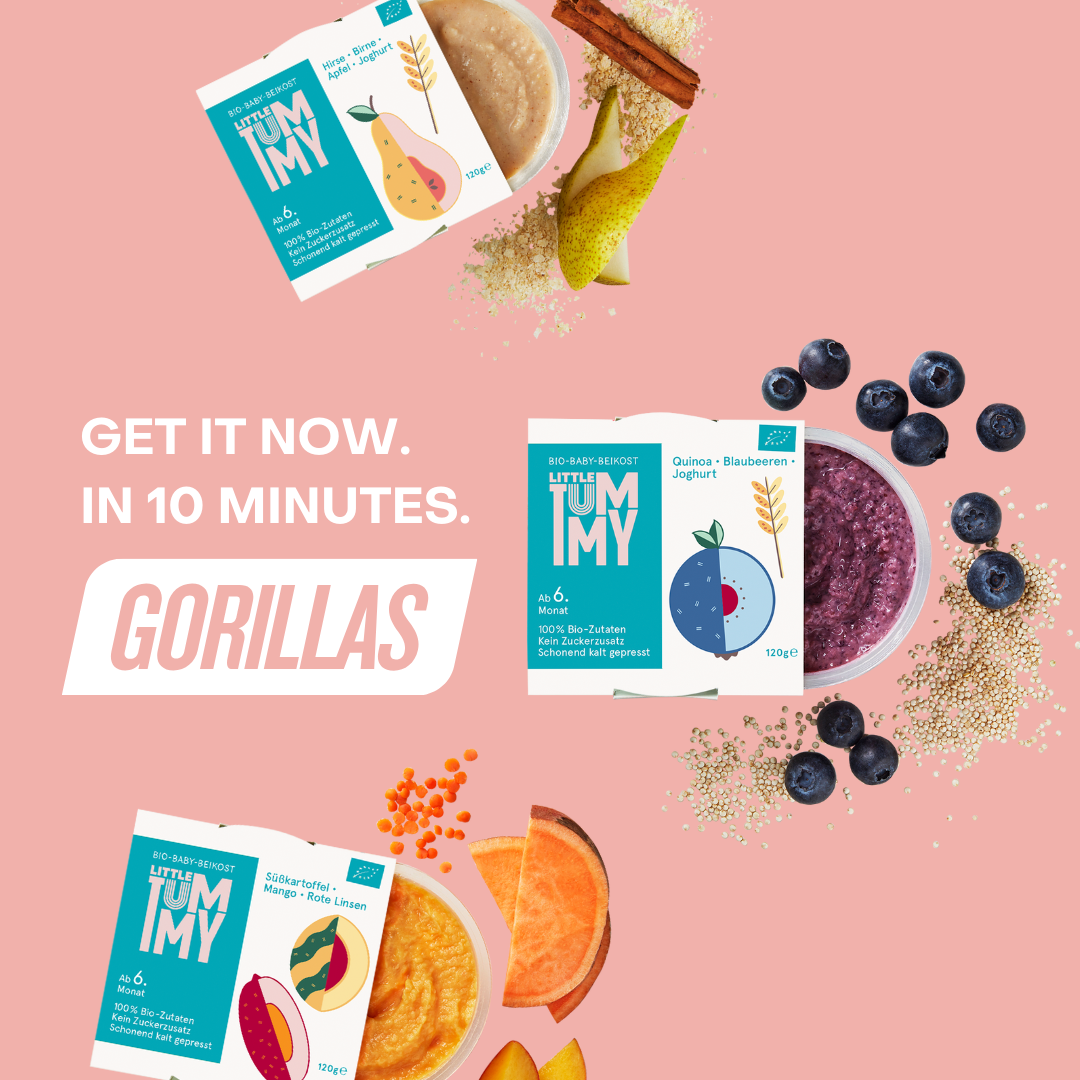
Little Tummy bei Gorillas in Deutschland erhältlich
Tolle Neuigkeiten für unsere Eltern in Deutschland: Du kannst Little Tummys frischen Bio-Babybrei jetzt bei Gorillas bestellen!
When you take your baby outside, keep in mind that infants don’t keep the temperature as easily as older children or adults. Even a cold wind can make them get cold quite quickly. Babies don’t have the ability to increase their body temperature by shivering. In addition, they are moving around less when carried or lying in their pram. With temperatures below freezing, walks should be of short duration and playing in the snow should only be for children older than one year.
As a rule of thumb, you might want to dress your baby with one more layer than you are comfortable: If you feel warm enough in a jumper and coat, choose a jacket and blanket for your little one. Choose a bodysuit with long arms and tights as a first layer, trousers and a jumper as second layer and a jacket or snowsuit on top. This way, you can take off or add layers as needed. Make sure, you cover feet, hands and especially the head well as this is where babies easily lose heat. Remove hats and extra clothing as soon as you come indoors or enter a warm car, bus or train to make sure your baby doesn’t get too hot.
The delicate skin of your baby might get easily irritated in winter so choose breathable and soft fabrics as a first layer, such as cotton or muslin. Wool can sometimes irritate the skin, especially in babies who suffer from eczema, so it is always a good idea to wear a softer fabric underneath.
This is a great way to keep your baby warm and to easily check if your little one is comfortable. He or she might not need the extra layer on top when carried in a sling but make sure that the head, hands and feet are covered.
When you take your baby out in a pram, ensure good air circulation by using only plastic covers suitable for the model you are using. The best option is to cover your baby with a blanket up to the arms so the face remains free.
When driving in the car with your baby, make sure that you take the coat off first and then secure the seat straps. This is not only because your baby might get too warm in the car but mainly because you will have to loosen the straps in order to fasten the seatbelt around the coat. This might be unsafe in a crash. If you are concerned about your baby’s temperature, use a blanket for the lower part of the body.
High indoor temperatures can dry out your baby’s skin and lead to irritation. High room temperatures have also been shown to increase the risk of SIDS. Keep the room temperature around 18 degree at night or where it is comfortable for yourself.
Cold temperatures outside, inside heating and the lack of humidity can dry out your baby’s skin. A warm bath can sometimes make things worse. Most babies don’t need a daily bath but when you to bathe it, limit the amount of time in the water (no longer than 10 minutes). Apply a moisturizer or ointment with no added perfumes or preservatives after every bath and as often as needed. Some babies need reapplication several times a day. If you see red and itchy patches, blisters, open or oozing parts of skin, make an appointment with your health professional.
When going outside, check your baby frequently for signs of discomfort. If her face is read, the neck area is sweaty and she is getting fuzzy, she might be too warm and might want to lose a layer. If he gets teary-eyed, irritated and the skin is cold to the touch, he might be too cold and need an extra layer. If your baby is shivering or has red hands, feets or face, take him inside immediately and warm him up by putting on an extra layer of clothes and cuddling. Other signs that your baby has gotten too cold and needs medical attention are lethargy, non-responsiveness, and blue lips or face. In this case you should seek medical attention immediately.
✕